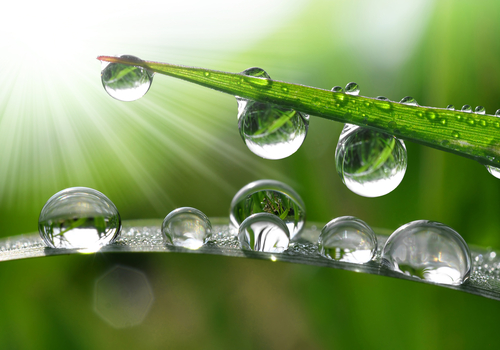No, this is not related to a medical condition for over 80’s; it’s the relationship that vegetation has with moisture in the atmosphere. It’s essential to life! The Small Water Cycle increases local precipitation by up to 40% through the process of evapotranspiration, condensation, dew and light rain. (NSF).

Dew alone can account for up to 100mm of unmeasured precipitation per year in this region. If you have walked through a grassy paddock early in the morning you’ll know what I mean! Compare that to walking across a dead paddock, road or a footpath which has almost no accumulated moisture – your boots will stay dry.

The difference is stark; there is 60-70% less evapotranspiration on a drained landscape than a hydrated one and the hydrated one emits less than half heat! (Pokorny.J. Brom.J et al 2010). A desert has larger temperature fluctuations than a rainforest.
With moisture comes temperature stability. Water (not CO2) balances thermal extremes. Unfortunately, concentrations of water vapor in the atmosphere can fluctuate greatly- 1-4% (Kravik et Al. Waterparadigm.org) and is highly influenced on a local scale by land managers. While the focus has been on atmospheric C02 concentration, its fluctuation is relatively stable at 0.0383% (Kravik et Al. Waterparadigm.org).
In farming, it’s somewhat ironic that measures put in place to conserve moisture (such as tillage and chemical spraying to fallow paddocks), or to lessen fire risk (preemptive vegetation burning) actually inhibits the Small Water Cycle. This ultimately makes conditions worse for fire and reduces moisture available for desirable plants to grow. This is desertification.
So, if plants contribute to more moisture, wouldn’t it be better to have more plants? Ideally biodiversity (including all types of plants from grasses and weeds to trees and shrubs) make use of our ample sunlight, photosynthesising and turning solar energy into plant sugars contributing to soil life and carbon sequestration. Furthermore, multi-level green vegetation enables solar energy to be captured 3-dimensionally rather than just 2- as happens with most monoculture crops and short grasslands (Neils Olssen, 2020).
 Syntropic farming capitalises on the production benefits of multi-tiered production crops. When coupled with measures to slow and disperse water flow across land (rather than allowing fast overland flow into the oceans), microclimates, that give us better long-term hydrology and resilience to droughts, fire & flood, can then develop.
Syntropic farming capitalises on the production benefits of multi-tiered production crops. When coupled with measures to slow and disperse water flow across land (rather than allowing fast overland flow into the oceans), microclimates, that give us better long-term hydrology and resilience to droughts, fire & flood, can then develop.
Perhaps it’s not Carbon that holds the key to future prosperity but biodiversity, ground cover and a hydrated landscape?
